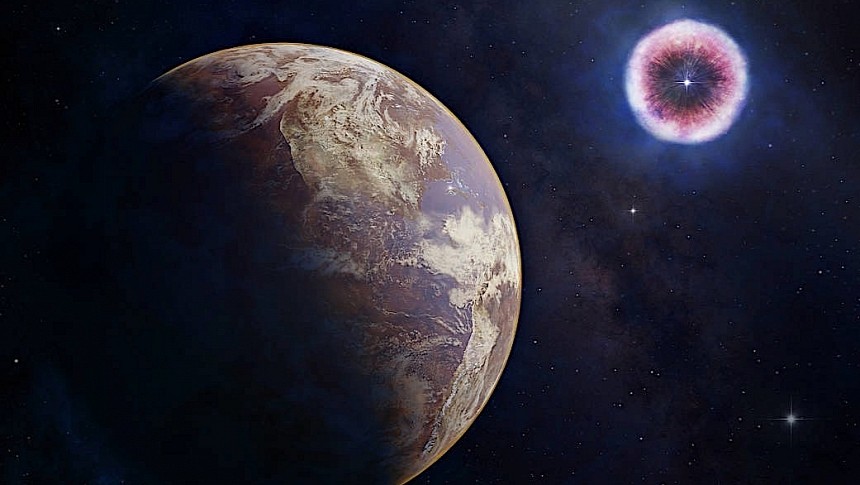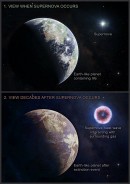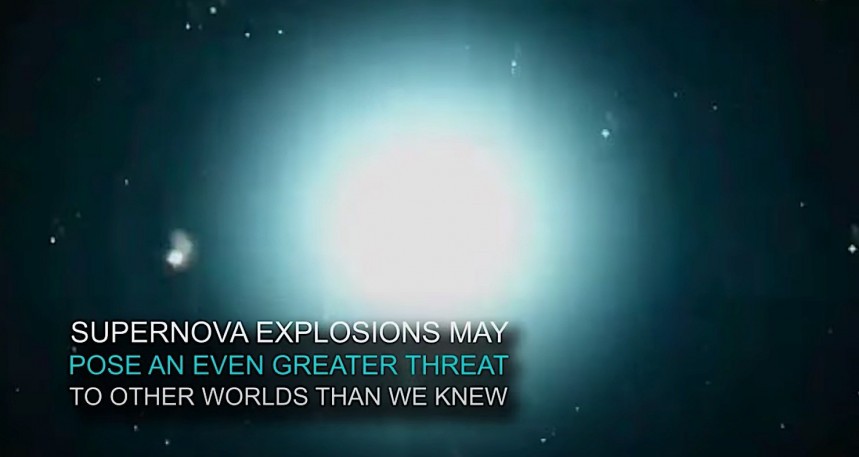One of the most spectacular events we know is regularly taking place in our Universe is the explosion of stars. Officially called supernovae, these events are so massive they affect not only their immediate solar systems, but also places located so far away that it’s hard for the human brain to understand.
Supernovae occur during the final stages of a star’s life cycle. It involves forces and energies so massive that the star is turned after the event into either a neutron star or a black hole.
For the neighboring places, a supernova translates into utter disaster. During the event’s early stages, extreme radiation produced for several months wreaks havoc all around the star. For thousands of years after it occurred, the supernova’s charged particles can hit places located very far away.
Yet no effect of such cosmic destruction even comes close to what X-rays produced during the blast can do to Earth-like planets located even as far as 160 light years away. And we’re just learning of how deadly such a thing can be.
Earlier this week, NASA released new data based on Chandra X-ray Observatory’s work. By looking at Chandra's information gathered after the piece of hardware was pointed at 31 supernovae, scientists are now able to classify exploding stars' X-rays as another massive danger to life.
Provided the conditions are right and the X-rays released during a supernova encounter dense gas, they get an overdose of power that makes them last for decades and reach incredible distances. If a planet capable of supporting life happens to be in its way, this burst of X-rays has the potential to make it very inhospitable.
According to the University of Illinois’ Ian Brunton, who led the study, the radiation may in some cases be powerful enough to obliterate a planet’s ozone layer and generally modify atmospheric chemistry, and the consequences of that are lethal for life as we know it.
We’re told that, at the moment, Earth is in no danger of being hit by such waves of radiation. Research (more specifically the discovery of radioactive iron) ) has revealed though that in at least two instances in the distant past, two and eight million years ago, supernovae triggered at a distance of between 65 and 500 light years away affected our planet to some degree.
Scientists say there is no evidence that the X-rays from these supernovae caused some mass extinction event here, but such evidence would be incredibly difficult to come by, considering the millions of years that have passed since.
Our own Sun will likely not go supernova because it’s simply not big enough - it would need to be at least eight to twenty times larger for that, depending on who you ask. When it dies, it will however expand to such a degree that it will completely destroy the inner planets, Earth included, turning into a red giant of unimaginable size. Luckily, such a thing will not happen sooner than five billion years from now.
For the neighboring places, a supernova translates into utter disaster. During the event’s early stages, extreme radiation produced for several months wreaks havoc all around the star. For thousands of years after it occurred, the supernova’s charged particles can hit places located very far away.
Yet no effect of such cosmic destruction even comes close to what X-rays produced during the blast can do to Earth-like planets located even as far as 160 light years away. And we’re just learning of how deadly such a thing can be.
Earlier this week, NASA released new data based on Chandra X-ray Observatory’s work. By looking at Chandra's information gathered after the piece of hardware was pointed at 31 supernovae, scientists are now able to classify exploding stars' X-rays as another massive danger to life.
According to the University of Illinois’ Ian Brunton, who led the study, the radiation may in some cases be powerful enough to obliterate a planet’s ozone layer and generally modify atmospheric chemistry, and the consequences of that are lethal for life as we know it.
We’re told that, at the moment, Earth is in no danger of being hit by such waves of radiation. Research (more specifically the discovery of radioactive iron) ) has revealed though that in at least two instances in the distant past, two and eight million years ago, supernovae triggered at a distance of between 65 and 500 light years away affected our planet to some degree.
Scientists say there is no evidence that the X-rays from these supernovae caused some mass extinction event here, but such evidence would be incredibly difficult to come by, considering the millions of years that have passed since.
Our own Sun will likely not go supernova because it’s simply not big enough - it would need to be at least eight to twenty times larger for that, depending on who you ask. When it dies, it will however expand to such a degree that it will completely destroy the inner planets, Earth included, turning into a red giant of unimaginable size. Luckily, such a thing will not happen sooner than five billion years from now.








